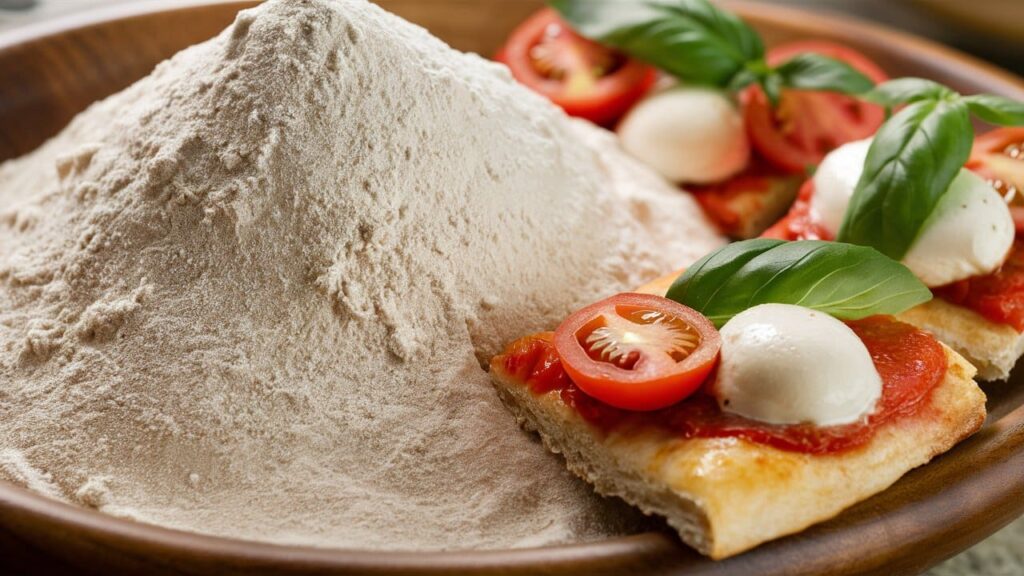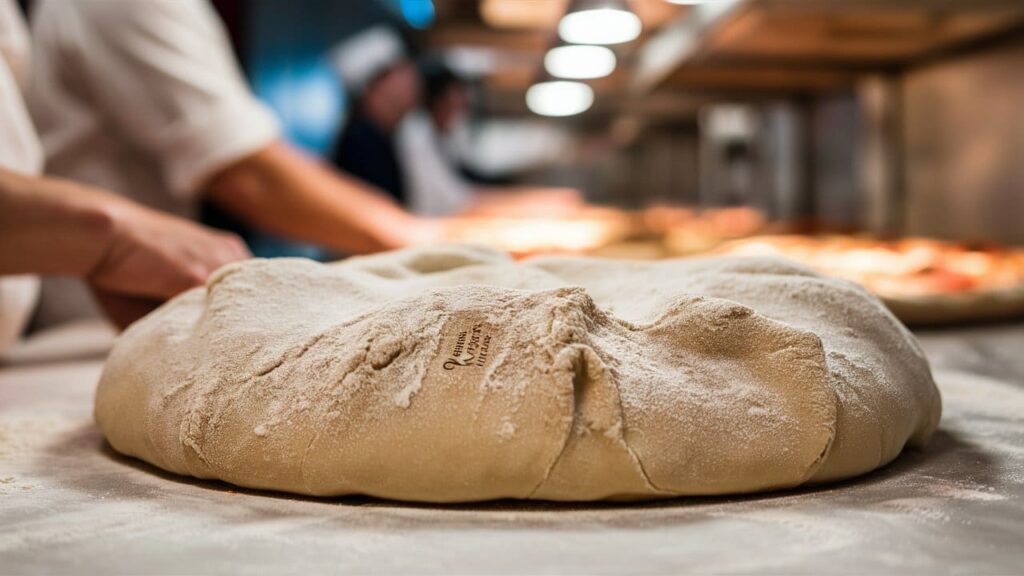When it comes to crafting the perfect pizza, the type of flour you use can make a significant difference. Among the various options available, Caputo flour often stands out as the gold standard for pizza dough. This article explores why pizza makers highly revere Caputo flour and whether it truly lives up to its reputation.
Understanding Caputo Flour
What is Caputo Flour?
Caputo flour originates from Naples, Italy, the birthplace of pizza. The Caputo family, who have been milling flour since 1924, produce this type of flour. They specifically mill and blend it to achieve the ideal gluten content and granulation for pizza dough, making it a favorite among professional pizzaiolos and enthusiasts alike.
Types of Caputo Flour
Caputo offers several types of flour, each designed for different baking needs. The most popular for pizza include:
- Caputo “00” Pizzeria Flour: Ideal for classic Neapolitan pizzas, this flour has a very fine, powdery texture and is highly refined.
- Caputo “00” Chef’s Flour: Slightly more versatile, suitable for both pizzas and other types of bread.
- Caputo “00” Gluten Free Flour: Provides an alternative for those with gluten sensitivities without compromising on the traditional pizza texture.
Key Characteristics
The key to Caputo flour’s superiority lies in its protein content, which typically ranges from 12.5% to 14%, perfect for developing the necessary gluten structure for a light, airy crust. Additionally, its milling process results in a finer flour, which absorbs water efficiently and forms a smooth, elastic dough.
Caputo Flour vs. Other Flours
Comparing Gluten Content
Caputo flour’s gluten content is specifically tailored for pizza dough, providing enough elasticity for stretching and shaping without tearing, a common issue with lower-protein flours. In contrast, other common bread flours might have similar protein contents but behave differently due to their gluten quality and the size of the milled grains.
Absorption and Hydration
Caputo flour’s fine grind not only affects the texture but also its hydration capabilities. It absorbs water more gradually, allowing for a more controlled dough formation. This characteristic is crucial in achieving the classic Neapolitan pizza texture, which requires a high hydration dough.
Performance at High Temperatures
Neapolitan pizza traditionally cooks at extremely high temperatures (up to 900°F). Caputo flour can withstand these intense conditions, enabling the dough to puff up quickly and create the characteristic charred bubbles without burning or becoming tough.
Culinary Applications of Caputo Flour
Neapolitan Pizza
Caputo flour is synonymous with Neapolitan pizza. Its ability to create dough that can stretch thinly without breaking is essential for this style of pizza, known for its minimal toppings and quick cooking time. The resulting crust is chewy and tender, with a slight crisp.
Other Pizza Styles
While ideal for Neapolitan pizza, Caputo flour is also versatile enough for other styles. For thicker, American-style pizzas, it provides a robust base that can support heavier toppings and longer baking times without becoming soggy.
Beyond Pizza
Caputo flour is also excellent for making Italian breads like ciabatta or focaccia, offering a chewy texture and good rise. Its fine texture makes it suitable for pastries, though adjustments may be necessary in recipes typically calling for all-purpose flour.
User Experiences and Expert Opinions on Caputo Flour
As the popularity of Caputo flour grows among both amateur and professional chefs, feedback and insights from these users become invaluable. Here we examine the experiences of those who use Caputo flour regularly and what experts have to say about its performance in pizza making.
User Testimonials
Consistency in Dough Quality
Many home cooks and professionals alike praise Caputo flour for its consistent quality. Users report that it produces a reliable and reproducible dough, minimizing the typical variables that can affect the baking process, such as humidity and temperature differences.

Enhanced Flavor Profile
Those who have switched to Caputo flour often note a significant improvement in the flavor of their pizza crusts. The flour imparts a subtle but distinct taste that is often described as more authentic and artisanal compared to other flours.
Learning Curve
While the advantages are clear, some users mention a learning curve when first using Caputo flour, particularly in adjusting hydration levels and kneading techniques to suit its unique properties.
Expert Reviews
Pizzaiolos’ Choice
Professional pizza chefs, particularly those specializing in Neapolitan-style pizzas, frequently favor Caputo flour. They cite its high gluten content and elasticity as key factors in achieving the perfect crust—thin, with a puffy, charred cornicione (edge) that is characteristic of authentic Neapolitan pizzas.
Culinary Educators’ Perspective
Culinary teachers and food scientists also weigh in on the benefits of using Caputo flour, particularly for educational purposes. They value its forgiving nature, allowing students to achieve more consistent results and better understand the impact of high-quality flour on baking outcomes.
Comparative Studies
In culinary tests, Caputo flour often outperforms others when evaluated for texture, rise, and flavor in pizza doughs. These studies reinforce its reputation in the culinary community, suggesting that its formulation is indeed optimized for exceptional pizzas.
Practical Tips for Using Caputo Flour in Pizza Making
To leverage the full potential of Caputo flour in pizza making, certain techniques and tips can enhance the final product. Here’s how you can make the best use of this specialized flour:
Hydration Ratios
Finding the Right Balance
Caputo flour’s absorption properties may differ slightly from other flours, often requiring adjustments in water ratios. For Neapolitan pizza, hydration levels around 60-65% are common, but some chefs recommend experimenting within this range to suit specific oven conditions and preferences.
Kneading and Fermentation
Technique Adjustments
The kneading process for Caputo flour should be thorough but gentle to develop the gluten network without overworking the dough. Additionally, allowing for a longer fermentation period can enhance the flavor and texture of the crust, making it more digestible and aromatic.
Temperature and Timing
Fermentation is highly dependent on temperature. A slow, cold fermentation in the refrigerator can develop flavors more fully, while a room temperature proof is quicker but may not develop as complex a taste profile.
Future Trends and Innovations with Caputo Flour
Looking forward, Caputo flour is likely to continue playing a significant role in both traditional and innovative baking practices. Here’s what might be expected:
New Flour Blends
Catering to Evolving Needs
Caputo continues to innovate by developing new blends that cater to specific dietary needs and baking technologies. Gluten-free options and flours optimized for different types of ovens are examples of how Caputo may expand its offerings.
Sustainability in Flour Production
Eco-Friendly Practices
As sustainability becomes increasingly important, Caputo and other flour producers are likely to adopt more eco-friendly practices in their milling processes. This could include using renewable energy sources and improving supply chain efficiencies to reduce environmental impact.
Expanding Caputo Flour’s Applications Beyond Pizza
While Caputo flour is celebrated for its superb qualities in pizza making, its utility extends into other areas of baking and cooking. Exploring these additional applications can provide culinary enthusiasts with new ways to utilize this versatile flour in their kitchens.
Baking with Caputo Flour
Artisan Breads
Caputo flour’s high protein content and strong gluten network make it an excellent choice for artisan bread making. Its ability to retain gas and moisture during baking results in loaves with a beautiful crust and a chewy, airy interior. Bakers can experiment with Caputo flour in recipes for ciabatta, baguettes, and other rustic bread styles.
Pastries and Desserts
The fine texture and purity of Caputo flour also make it suitable for delicate pastries and desserts. It can be used to create tender and flaky pastries like croissants and tarts, providing a melt-in-your-mouth texture that enhances the overall dessert experience.
Homemade Pasta
Caputo flour is not limited to baked goods; it is also ideal for making homemade pasta. The gluten strength allows the pasta dough to be stretched thinly without tearing, perfect for varieties like tagliatelle or pappardelle, and even for stuffed pastas like ravioli.
Creative Cooking with Caputo Flour
Thickening Agent
Beyond baking, Caputo flour can serve as a thickening agent for sauces and gravies. Its fine mill results in a smooth consistency without clumping, ideal for creating velvety sauces that accompany meat dishes, vegetables, or pasta.

Frying Batter
Caputo flour can be used in batters for frying foods, offering a light, crispy texture that is not overly greasy. This makes it a great choice for frying fish, vegetables, or even making tempura, providing a crunch that complements the natural flavors of the fried items.
Healthier Cooking Options
Gluten Sensitivity Options
While traditional Caputo flour is not gluten-free, the company offers gluten-free alternatives that maintain the high standards of the brand. These options allow individuals with gluten sensitivities or celiac disease to enjoy the benefits of Caputo flour in their cooking and baking endeavors.
Nutritional Enhancements
For those looking to boost the nutritional content of their meals, incorporating Caputo flour into recipes can add significant value. Its protein-rich composition supports muscle health and provides energy, making it a beneficial addition to any diet.
Future of Cooking with Caputo Flour
Looking ahead, the role of Caputo flour in global kitchens is likely to grow not only in breadth but also in depth. Here are some anticipated trends:
Increased Global Availability
As the popularity of authentic Italian cuisine continues to rise globally, the availability of Caputo flour is expected to increase, making it accessible to more home cooks and professional chefs worldwide.
Innovation in Flour Products
Caputo is poised to continue its tradition of innovation by developing more specialized flours that cater to specific baking needs and health considerations, such as organic options and blends designed for specific types of baking appliances.
Educational Initiatives
Caputo may also expand its educational efforts, offering more workshops, demonstrations, and online resources to help individuals learn how to best use their products to achieve culinary excellence.
Conclusion: Embracing the Versatility of Caputo Flour
Caputo flour is undoubtedly a standout choice for making pizza, but its uses extend far beyond. From baking bread and pastries to crafting homemade pasta and thickening sauces, Caputo flour proves to be a kitchen staple that enhances a wide array of dishes. As culinary techniques evolve and dietary needs change, Caputo flour remains adaptable, continuing to offer chefs and home cooks around the world a reliable, high-quality ingredient for their cooking and baking endeavors. By embracing the full potential of Caputo flour, you can elevate your culinary creations and enjoy a taste of Italian tradition in your own home.
You can get more recipes from here:
- Perfect Caputo Pizza Dough Recipe: Easy Step-by-Step Guide
- Delicious Gluten-Free, Dairy-Free Dessert Recipes for Everyone
- Creative and Delicious Leftover Tri-Tip Recipes for Every Meal
- Easy Homemade Protein Bread Recipe for Healthy Meals
- Sandwich Sourdough Bread Recipe: Easy Guide for Perfect Loaves

